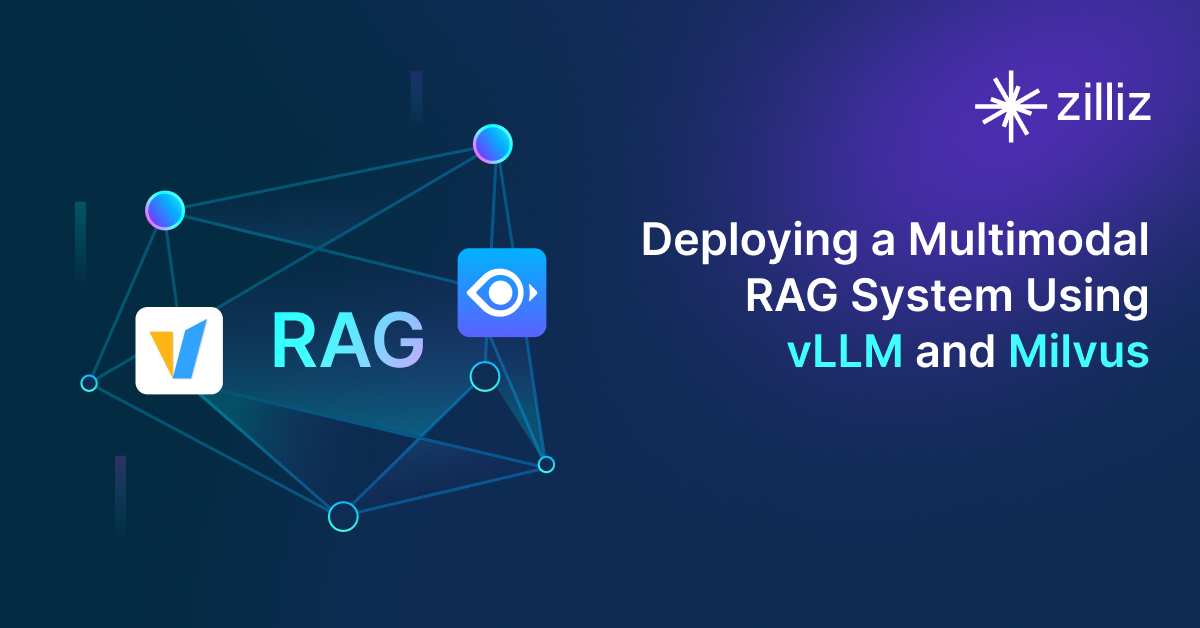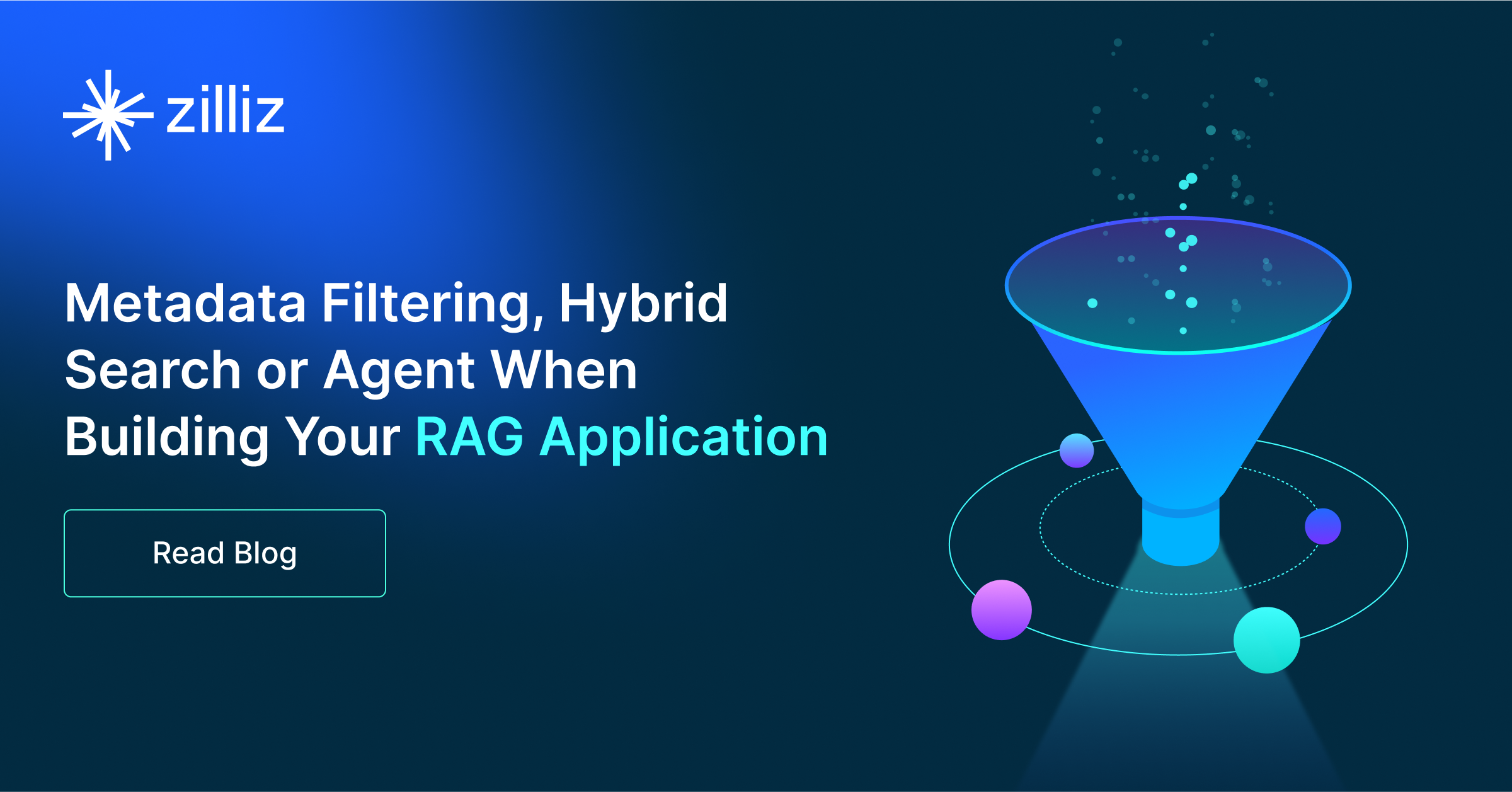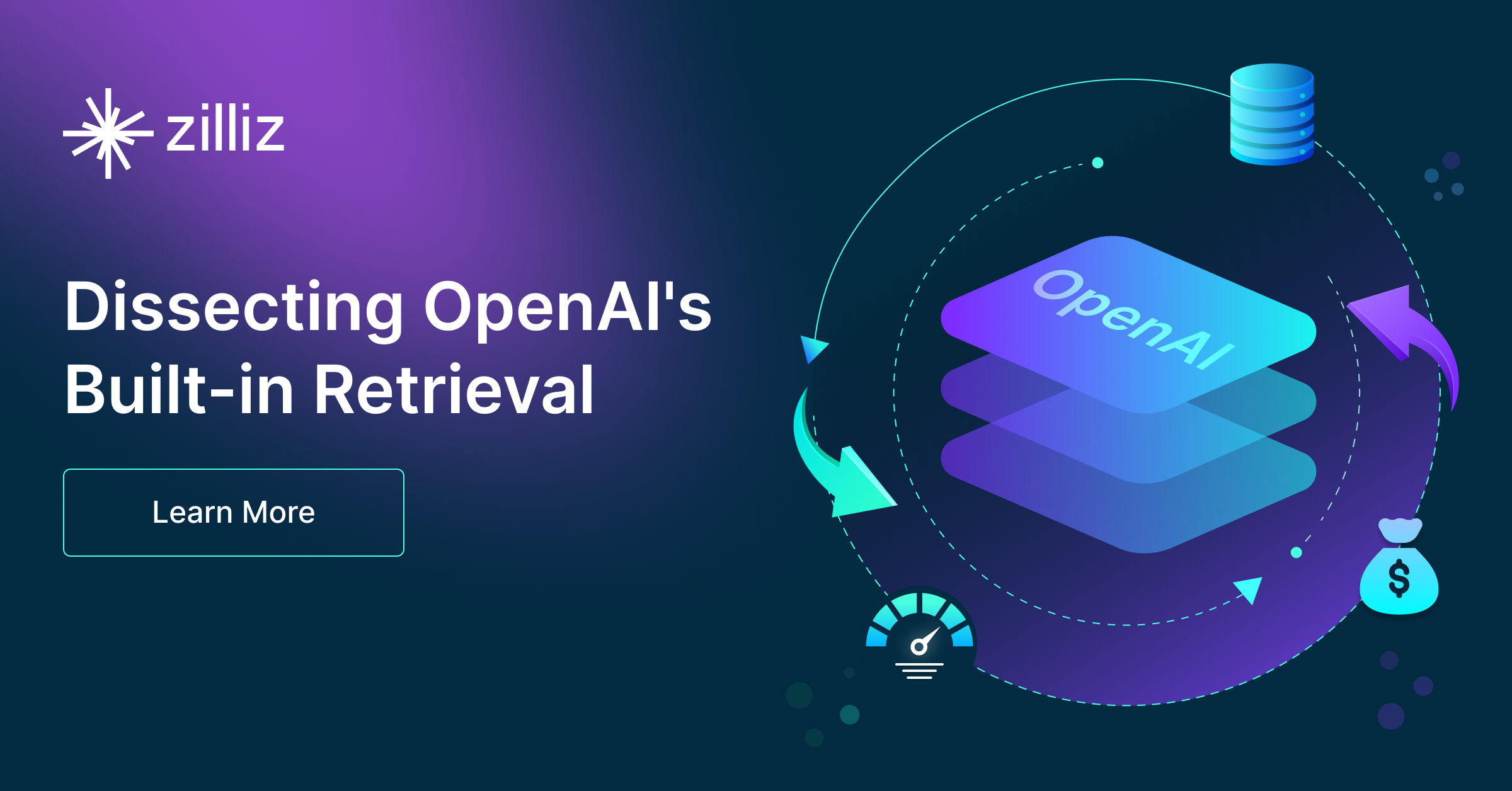Build RAG Chatbot with LangChain, pgvector, NVIDIA BGE-M3, and Cohere embed-multilingual-v3.0
Introduction to RAG
Retrieval-Augmented Generation (RAG) is a game-changer for GenAI applications, especially in conversational AI. It combines the power of pre-trained large language models (LLMs) like OpenAI’s GPT with external knowledge sources stored in vector databases such as Milvus and Zilliz Cloud, allowing for more accurate, contextually relevant, and up-to-date response generation. A RAG pipeline usually consists of four basic components: a vector database, an embedding model, an LLM, and a framework.
Key Components We'll Use for This RAG Chatbot
This tutorial shows you how to build a simple RAG chatbot in Python using the following components:
- LangChain: An open-source framework that helps you orchestrate the interaction between LLMs, vector stores, embedding models, etc, making it easier to integrate a RAG pipeline.
- Pgvector: an open-source extension for PostgreSQL that enables efficient storage and querying of high-dimensional vector data, essential for machine learning and AI applications. Designed to handle embeddings, it supports fast approximate nearest neighbor (ANN) searches using algorithms like HNSW and IVFFlat. Since it is just a vector search add-on to traditional search rather than a purpose-built vector database, it lacks scalability and availability and many other advanced features required by enterprise-level applications. Therefore, if you prefer a much more scalable solution or hate to manage your own infrastructure, we recommend using Zilliz Cloud, which is a fully managed vector database service built on the open-source Milvus and offers a free tier supporting up to 1 million vectors.)
- NVIDIA BGE-M3: The NVIDIA BGE-M3 is a state-of-the-art language model designed to generate human-like text, making it suitable for a variety of natural language processing tasks. Its strength lies in its ability to produce coherent and contextually relevant responses, making it ideal for applications in chatbots, content creation, and virtual assistants. BGE-M3 excels in understanding nuanced input, providing users with highly accurate and engaging interactions, thereby enhancing automated communication systems across multiple industries.
- Cohere embed-multilingual-v3.0: This model provides high-quality multilingual text embeddings, enabling effective semantic understanding across diverse languages. Its strengths lie in capturing nuanced meanings and facilitating cross-lingual search and analysis. Ideal for applications in global customer support, content recommendation, and multilingual data analysis, it enhances multilingual communication and insight extraction.
By the end of this tutorial, you’ll have a functional chatbot capable of answering questions based on a custom knowledge base.
Note: Since we may use proprietary models in our tutorials, make sure you have the required API key beforehand.
Step 1: Install and Set Up LangChain
%pip install --quiet --upgrade langchain-text-splitters langchain-community langgraph
Step 2: Install and Set Up NVIDIA BGE-M3
pip install -qU "langchain-nvidia-ai-endpoints"
import getpass
import os
if not os.environ.get("NVIDIA_API_KEY"):
os.environ["NVIDIA_API_KEY"] = getpass.getpass("Enter API key for NVIDIA: ")
from langchain.chat_models import init_chat_model
llm = init_chat_model("baai/bge-m3", model_provider="nvidia")
Step 3: Install and Set Up Cohere embed-multilingual-v3.0
pip install -qU langchain-cohere
import getpass
import os
if not os.environ.get("COHERE_API_KEY"):
os.environ["COHERE_API_KEY"] = getpass.getpass("Enter API key for Cohere: ")
from langchain_cohere import CohereEmbeddings
embeddings = CohereEmbeddings(model="embed-multilingual-v3.0")
Step 4: Install and Set Up pgvector
pip install -qU langchain-postgres
from langchain_postgres import PGVector
vector_store = PGVector(
embeddings=embeddings,
collection_name="my_docs",
connection="postgresql+psycopg://...",
)
Step 5: Build a RAG Chatbot
Now that you’ve set up all components, let’s start to build a simple chatbot. We’ll use the Milvus introduction doc as a private knowledge base. You can replace it with your own dataset to customize your RAG chatbot.
import bs4
from langchain import hub
from langchain_community.document_loaders import WebBaseLoader
from langchain_core.documents import Document
from langchain_text_splitters import RecursiveCharacterTextSplitter
from langgraph.graph import START, StateGraph
from typing_extensions import List, TypedDict
# Load and chunk contents of the blog
loader = WebBaseLoader(
web_paths=("https://milvus.io/docs/overview.md",),
bs_kwargs=dict(
parse_only=bs4.SoupStrainer(
class_=("doc-style doc-post-content")
)
),
)
docs = loader.load()
text_splitter = RecursiveCharacterTextSplitter(chunk_size=1000, chunk_overlap=200)
all_splits = text_splitter.split_documents(docs)
# Index chunks
_ = vector_store.add_documents(documents=all_splits)
# Define prompt for question-answering
prompt = hub.pull("rlm/rag-prompt")
# Define state for application
class State(TypedDict):
question: str
context: List[Document]
answer: str
# Define application steps
def retrieve(state: State):
retrieved_docs = vector_store.similarity_search(state["question"])
return {"context": retrieved_docs}
def generate(state: State):
docs_content = "\n\n".join(doc.page_content for doc in state["context"])
messages = prompt.invoke({"question": state["question"], "context": docs_content})
response = llm.invoke(messages)
return {"answer": response.content}
# Compile application and test
graph_builder = StateGraph(State).add_sequence([retrieve, generate])
graph_builder.add_edge(START, "retrieve")
graph = graph_builder.compile()
Test the Chatbot
Yeah! You've built your own chatbot. Let's ask the chatbot a question.
response = graph.invoke({"question": "What data types does Milvus support?"})
print(response["answer"])
Example Output
Milvus supports various data types including sparse vectors, binary vectors, JSON, and arrays. Additionally, it handles common numerical and character types, making it versatile for different data modeling needs. This allows users to manage unstructured or multi-modal data efficiently.
Optimization Tips
As you build your RAG system, optimization is key to ensuring peak performance and efficiency. While setting up the components is an essential first step, fine-tuning each one will help you create a solution that works even better and scales seamlessly. In this section, we’ll share some practical tips for optimizing all these components, giving you the edge to build smarter, faster, and more responsive RAG applications.
LangChain optimization tips
To optimize LangChain, focus on minimizing redundant operations in your workflow by structuring your chains and agents efficiently. Use caching to avoid repeated computations, speeding up your system, and experiment with modular design to ensure that components like models or databases can be easily swapped out. This will provide both flexibility and efficiency, allowing you to quickly scale your system without unnecessary delays or complications.
pgvector optimization tips
To optimize pgvector in a Retrieval-Augmented Generation (RAG) setup, consider indexing your vectors using GiST or IVFFlat to significantly speed up search queries and improve retrieval performance. Make sure to leverage parallelization for query execution, allowing multiple queries to be processed simultaneously, especially for large datasets. Optimize memory usage by tuning the vector storage size and using compressed embeddings where possible. To further enhance query speed, implement pre-filtering techniques to narrow down search space before querying. Regularly rebuild indexes to ensure they are up to date with any new data. Fine-tune vectorization models to reduce dimensionality without sacrificing accuracy, thus improving both storage efficiency and retrieval times. Finally, manage resource allocation carefully, utilizing horizontal scaling for larger datasets and offloading intensive operations to dedicated processing units to maintain responsiveness during high-traffic periods.
NVIDIA BGE-M3 optimization tips
To optimize the NVIDIA BGE-M3 in a Retrieval-Augmented Generation (RAG) setup, ensure that your data retrieval system is finely tuned for reusability and relevance—consider implementing a caching mechanism to store frequently accessed documents. Additionally, experimenting with the retrieval parameters, such as k-value in nearest neighbor searches, can yield better results for your specific tasks. Utilize mixed-precision training to enhance throughput and reduce memory usage without compromising model performance. Regularly monitor and fine-tune hyperparameters through validation tests to achieve the best balance between speed and accuracy. Lastly, leverage NVIDIA's TensorRT or ONNX optimization tools for model deployment to maximize inference efficiency.
Cohere embed-multilingual-v3.0 optimization tips
Cohere embed-multilingual-v3.0 is designed for multilingual support, making it highly useful in global RAG systems. To optimize performance, preprocess multilingual input by handling language-specific quirks, such as tokenization and special characters, to maintain consistency across different languages. Implement language detection models to filter and route queries to the appropriate language embeddings, improving both speed and relevance. Use indexing structures like FAISS or HNSW to speed up search across multilingual datasets. Compress embeddings using techniques like quantization to optimize storage while ensuring quality. To handle scalability, leverage distributed storage systems for efficient management of multilingual embeddings. Continuously retrain and update embeddings to reflect new languages or evolving language models.
By implementing these tips across your components, you'll be able to enhance the performance and functionality of your RAG system, ensuring it’s optimized for both speed and accuracy. Keep testing, iterating, and refining your setup to stay ahead in the ever-evolving world of AI development.
RAG Cost Calculator: A Free Tool to Calculate Your Cost in Seconds
Estimating the cost of a Retrieval-Augmented Generation (RAG) pipeline involves analyzing expenses across vector storage, compute resources, and API usage. Key cost drivers include vector database queries, embedding generation, and LLM inference.
RAG Cost Calculator is a free tool that quickly estimates the cost of building a RAG pipeline, including chunking, embedding, vector storage/search, and LLM generation. It also helps you identify cost-saving opportunities and achieve up to 10x cost reduction on vector databases with the serverless option.
 Calculate your RAG cost
Calculate your RAG cost
What Have You Learned?
By diving into this tutorial, you’ve unlocked the power of combining cutting-edge tools to build a Retrieval-Augmented Generation (RAG) system from the ground up! You learned how LangChain acts as the glue, seamlessly orchestrating the flow of data between components. With its modular design, LangChain lets you customize pipelines for tasks like document ingestion, retrieval, and response generation. Then came pgvector, the PostgreSQL extension that transforms your database into a high-performance vector store. By pairing it with powerful embedding models like NVIDIA BGE-M3 (for semantic accuracy and multilingual flexibility) or Cohere’s embed-multilingual-v3.0 (optimized for cross-language understanding), you saw how to convert text into rich numerical representations that capture meaning. These embeddings enable lightning-fast similarity searches, ensuring your RAG system pulls the most relevant context for the LLM to work with. Whether you’re building a multilingual Q&A bot or a domain-specific knowledge assistant, this integration ensures your app understands nuance and scales effortlessly.
But the learning didn’t stop there! You also explored optimization strategies—like tuning chunk sizes or indexing strategies in pgvector—to balance speed and accuracy. The tutorial even threw in a free RAG cost calculator to help you budget compute resources and avoid surprises. Now, imagine what’s next: refining retrieval logic, experimenting with hybrid search, or even fine-tuning embeddings for your niche use case. The tools are in your hands, and the possibilities are endless. So go ahead—start building, break things, iterate, and watch your ideas come to life. You’ve got the foundation; now it’s time to innovate and create something amazing. The future of intelligent apps is yours to shape! 🚀
Further Resources
🌟 In addition to this RAG tutorial, unleash your full potential with these incredible resources to level up your RAG skills.
- How to Build a Multimodal RAG | Documentation
- How to Enhance the Performance of Your RAG Pipeline
- Graph RAG with Milvus | Documentation
- How to Evaluate RAG Applications - Zilliz Learn
- Generative AI Resource Hub | Zilliz
We'd Love to Hear What You Think!
We’d love to hear your thoughts! 🌟 Leave your questions or comments below or join our vibrant Milvus Discord community to share your experiences, ask questions, or connect with thousands of AI enthusiasts. Your journey matters to us!
If you like this tutorial, show your support by giving our Milvus GitHub repo a star ⭐—it means the world to us and inspires us to keep creating! 💖
- Introduction to RAG
- Key Components We'll Use for This RAG Chatbot
- Step 1: Install and Set Up LangChain
- Step 2: Install and Set Up NVIDIA BGE-M3
- Step 3: Install and Set Up Cohere embed-multilingual-v3.0
- Step 4: Install and Set Up pgvector
- Step 5: Build a RAG Chatbot
- Optimization Tips
- RAG Cost Calculator: A Free Tool to Calculate Your Cost in Seconds
- What Have You Learned?
- Further Resources
- We'd Love to Hear What You Think!
Content
Vector Database at Scale
Zilliz Cloud is a fully-managed vector database built for scale, perfect for your RAG apps.
Try Zilliz Cloud for Free


